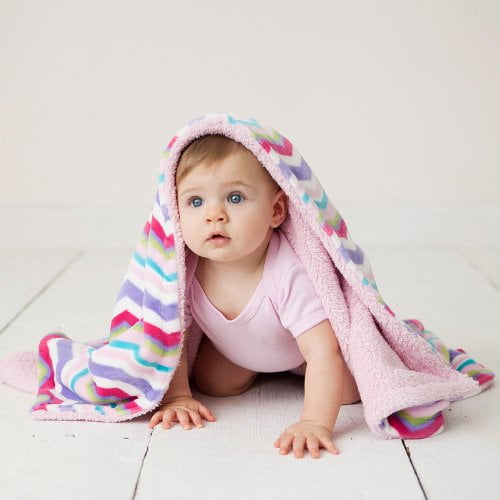Introduction to Baby Blankets
A baby blanket is much more than just a piece of fabric—it is a source of warmth, comfort, and security for infants and toddlers alike. From the very first days of a newborn’s life, a baby blanket provides a cozy environment that helps soothe and calm them. It plays a significant role in daily routines such as swaddling, napping, stroller rides, and bedtime. Over time, baby blankets can even become treasured keepsakes. As a result, selecting the right baby blanket is an important decision for parents who want to ensure their child’s comfort and safety.
Types of Baby Blankets
Swaddle Blankets
Swaddle blankets are specifically designed to wrap snugly around a newborn, recreating the feeling of being in the womb. This gentle pressure helps reduce the startle reflex and can improve sleep quality. Swaddle blankets are usually made from breathable, stretchy materials like muslin cotton or bamboo fabric, which allow airflow and keep babies from overheating. Their lightweight nature makes them perfect for year-round use.Receiving Blankets
Receiving blankets are versatile, lightweight cloths commonly used for multiple purposes, such as burping, wiping, or providing a soft surface for diaper changes. Typically crafted from soft cotton, these blankets come in a variety of sizes and are often adorned with playful prints or simple patterns. While they aren’t designed to be heavy blankets, they offer gentle warmth and can double as a stroller cover or light wrap.Crib Blankets
Crib blankets are larger and generally thicker, designed to provide warmth for babies while they sleep in cribs or bassinets. Materials like fleece, knit cotton, or plush polyester are popular choices for crib blankets due to their insulating properties. These blankets create a soft, cozy environment that helps maintain an ideal temperature, especially during colder months. However, parents must use crib blankets cautiously and follow safety guidelines to prevent risks like suffocation or overheating.Security Blankets (Loveys)
Security blankets, sometimes called “loveys,” are small, lightweight blankets often attached to soft toys, tags, or ribbons. These blankets provide emotional comfort and a sense of security for toddlers and young children. Many kids develop strong attachments to their loveys, using them to self-soothe during sleep or stressful situations. Security blankets are typically made from ultra-soft fabrics that are safe and gentle for sensitive skin.Materials and Fabric Choices
Choosing the right fabric is one of the most important aspects of selecting a baby blanket. Since babies have delicate and sensitive skin, the fabric must be soft, breathable, and hypoallergenic.Cotton: The most common and widely used fabric for baby blankets, cotton is soft, breathable, and easy to care for. Organic cotton is especially favored for its chemical-free production, making it gentler for newborns.
Muslin: Muslin is a loosely woven cotton fabric known for its breathability and lightweight nature. It is ideal for swaddling because it allows for airflow and reduces the risk of overheating.
Fleece: Fleece is a synthetic fabric prized for its warmth and plush texture. It is commonly used for crib blankets and colder climates but is less breathable than cotton.
Bamboo: Bamboo fabric has gained popularity for baby blankets due to its softness, antibacterial properties, and eco-friendliness. It is a sustainable choice that offers moisture-wicking and temperature-regulating benefits.
Knit Fabrics: Knitted blankets, often handmade or machine-knit, provide a charming, cozy option. They offer good insulation but may require careful washing to maintain their shape and softness.